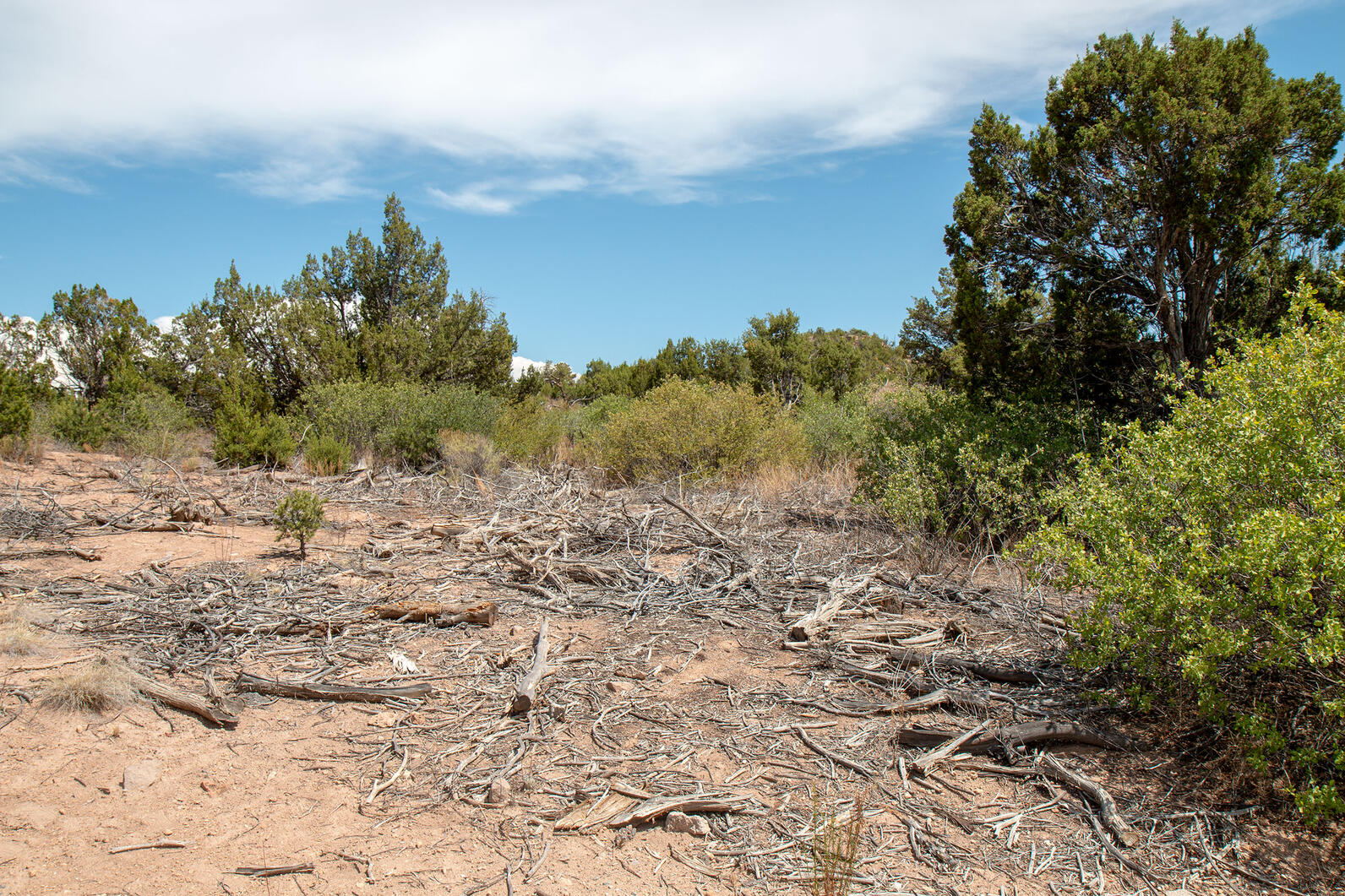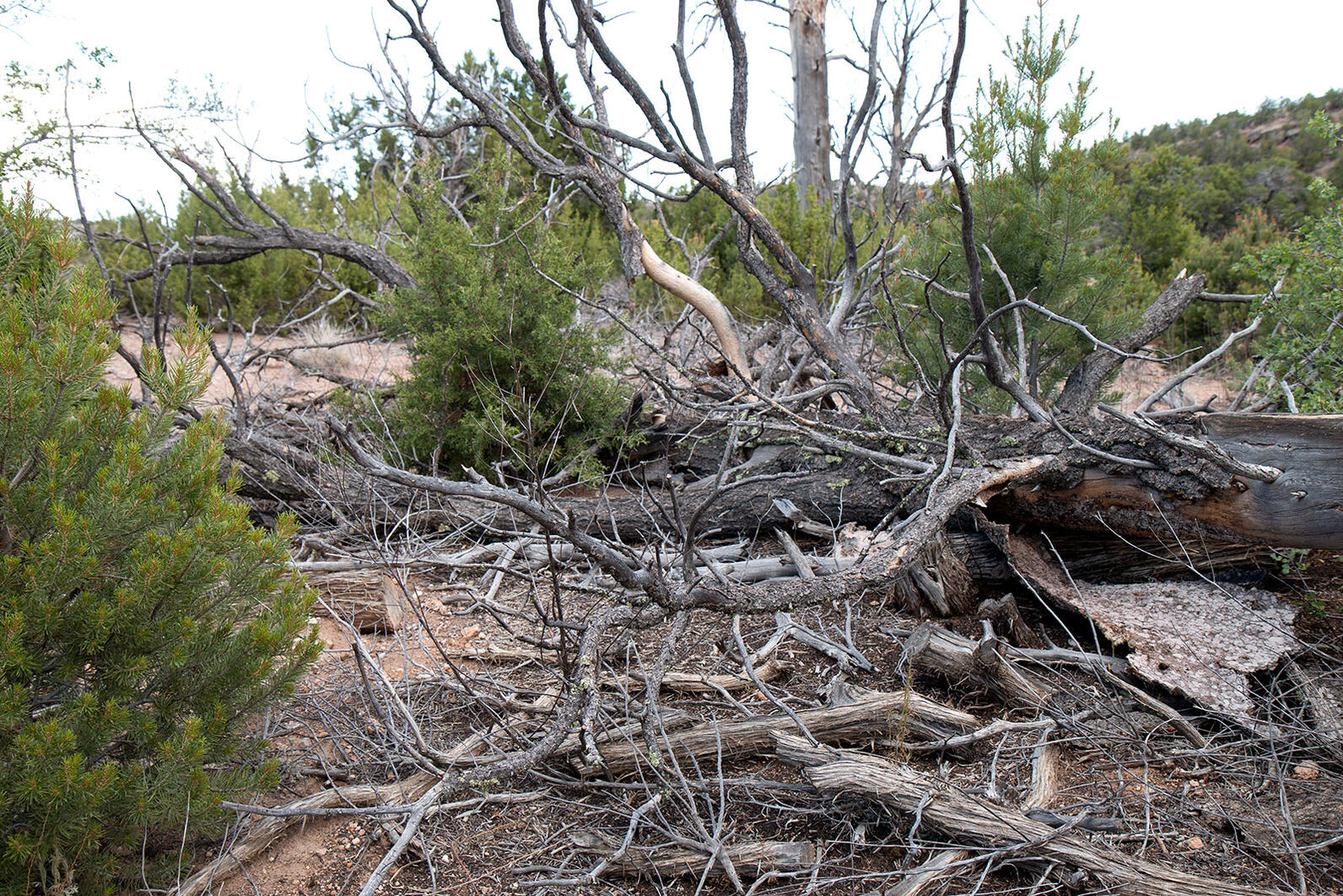By April Reese
On a June day in the piñon pine and juniper woodlands that lace the Pajarito Plateau in northern New Mexico, the only sound is the hot breeze wending through the trees and the occasional twitter of a Bewick's Wren or House Finch. Fifteen years ago at this time of year, these mesas and canyons were alive with a raucous chorus of birdsong. But that was before the pines began to die.
Piñon-juniper woodlands, covering at least 55 million acres across the Southwest and Great Basin, are some of the world’s hardiest, having evolved in an arid environment. But the Southwest is becoming even drier and hotter as climate change spikes temperatures and intensifies drought, and even stalwart piñons—whose delectable nuts appeal to both humans and wildlife—are struggling to survive this transformation.
The double whammy of prolonged drought and heat stress is killing the region’s signature piñon pines outright or weakening them enough for bark beetles to overwhelm their natural defenses and tunnel through their trunks, severing the flow of nutrients. In recent decades, millions of piñon—some 40 to 80 percent of all trees—have perished across a four-state area encompassing Arizona, Colorado, New Mexico, and Utah, leaving landscapes of dark-green juniper amid smooth, ash-gray skeletons of dead piñon. (Junipers are more drought-resistant than piñons, and are not affected by the piñon bark beetle (Ips confusus).)
Many wildlife species—including Pinyon and other jays, Clark’s Nutcrackers, Wild Turkeys, squirrels, and bears—gorge on piñons’ nutritious pine nuts, and little is known about how these die-offs affect them. New research published in Biological Conservation from scientists at Los Alamos National Laboratory (LANL) suggests that birds, at least, are not faring well in these parched woodlands.
In 2003, LANL ornithologist Jeanne Fair watched severe drought turn piñon from green to brown on large swaths of the lab's 23,000 acres, as well as at nearby Bandelier National Monument. She wondered how the die-off was affecting the birds that eat their nuts or nest in their branches—and how long it would take for those effects to manifest.
Each June from 2003 to 2013, she and her team counted any birds they heard or saw at nine sites on LANL and Bandelier lands during three 10-minute periods in the early morning, documenting which species they found and how many of each. When they tallied their results, the numbers were striking: Almost every bird species logged in 2003 had suffered losses by 2013.

Of the 14 species the team tracked, six that were abundant in early counts were down to just a few individuals by the end. Western Bluebirds, for example, dropped from 21 birds in 2003 to two in 2013, and Broad-tailed Hummingbirds fell from 14 to two. Eight species disappeared altogether, including piñon-juniper mainstays such as the Bushtit, which went from the most numerous bird tallied in the study’s first year—36 individuals were counted—to zero. In all, bird numbers declined by 73 percent between 2003 and 2013, and the number of species dropped by 45 percent.
These results track with previous studies finding that climate change is causing bird numbers in the Southwest to decrease. But the Los Alamos research shows that the losses may be gradual, and only noticeable after many years.
"It struck me that the decline was pretty much across the board,” says Jonathan Hayes, director of Audubon New Mexico, who was not involved in the study. “Even the common birds are declining.” And given that bird communities can be an early indicator of environmental shifts, those declines could mean that other wildlife species are in trouble—or soon will be.
It’s unclear what happened to the birds that have disappeared from the Pajarito Plateau’s piñon-juniper woodlands. The effects of climate change that killed the piñons—drought and heat stress—could have killed some birds. But it’s likely that many moved to higher ground, Fair says. When the team discussed their study with a LANL colleague who studies birds in ponderosa pine forests, which lie just upslope from piñon-juniper woodlands, they learned that he had found some piñon-juniper species at his study sites.
“Birds look around for good habitat, and if there isn’t good habitat they’ll move,” says Kristine Johnson, a conservation biologist with the University of New Mexico who led a 2017 study that found Pinyon Jays are less likely to nest in unhealthy piñon pines. “Birds are pretty flexible.”

The woodland birds on the move may not find refuge in ponderosa pine forests for long. These tall, thick-barked trees are facing the same temperature, drought, and beetle challenges as the piñon—though, at a higher elevation than piñon they haven't seen effects as extreme so far. As temperatures continue to climb and severe droughts become more frequent, there may be few places left where the birds can find escape, Hayes says. “Unfortunately, you can’t move up forever."
The loss of birds could make it even harder for the remaining piñon pines to hang on. Pinyon Jays and Clark’s Nutcrackers cache pine nuts for later and can remember a vast catalog of locations over winter. Some nuts are forgotten, though, and sprout into new trees. But with fewer birds around to spread their seeds, the trees could have trouble reproducing. The opening left by the dying trees might also invite non-native plants to take root, further transforming the ecosystem.
On an August afternoon after two weeks of monsoon rains, a few scattered piñon pine seedlings strive toward the hot sun in the Tsankawi unit of Bandelier National Monument, one of the LANL team’s study sites. Most are just a foot or two high, rising among decaying piñon limbs in the open expanses between the juniper trees, which now dominate the landscape. Last year's break from the drought, which has throttled northern New Mexico for most of the past 20 years, has given a smattering of cached nuts a chance to sprout. “They’re filling some of the spaces left by those dead adults,” says Craig Allen, an ecologist with the U.S. Geological Survey who studies tree dieback in the Southwest and around the world.
But to survive, these young trees will need to withstand ever-warmer temperatures, more drought, more beetle outbreaks, and possibly wildfire.
“Without those climate trends, piñon would recover," he says. “But there is a trend going on, and it’s looking like it will continue.”
There's a chance that the piñon could follow the birds upslope as the loss of ponderosa pines creates an opening to exploit. "They can handle the higher elevations,” Allen says. But that migration, he adds, could take decades—and it's unlikely that climate change will let up long enough to give these staple forests an opportunity to recover, much less thrive.
***
Audubon's Birds and Climate Change Report found that climate change threatens more than 300 North American bird species. You can support our science and conservation work by donating today.


